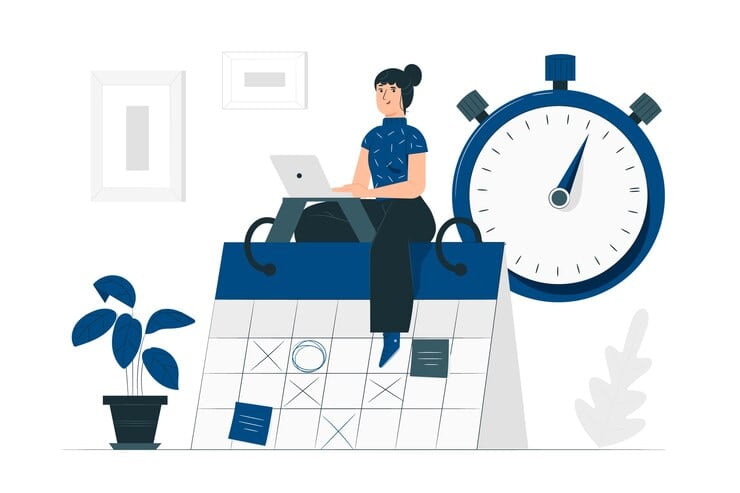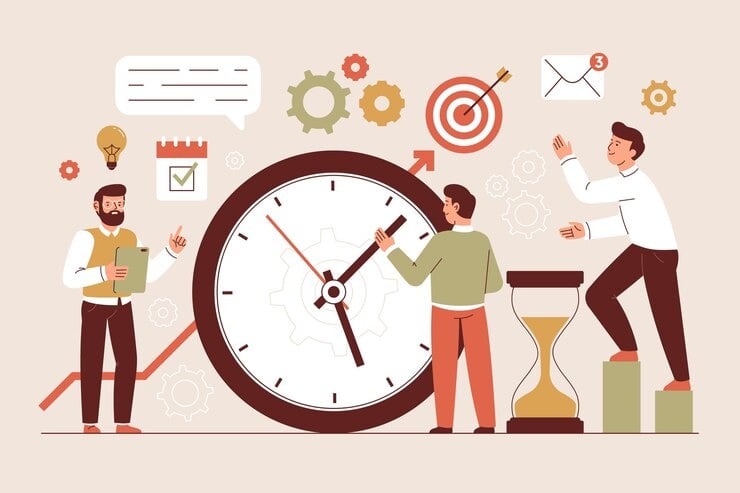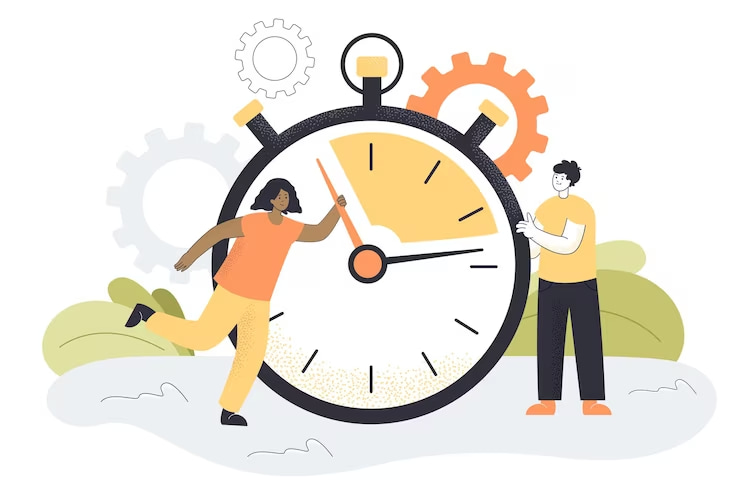In today’s fast-paced and demanding business world, achieving peak productivity is the key to success. Top executives, who operate at the highest echelons of their organizations, have mastered the art of time management to stay at the forefront of their industries.
Their secrets to success are not closely guarded; rather, they are valuable insights that can benefit professionals at all levels. In this guide we will delve into the strategies and techniques employed by these high-achieving individuals.
Whether you’re an aspiring executive or seeking to excel in your current role, these time management hacks will empower you to seize your full potential and make every minute count.
The power of effective time management
Knowing time management hacks is a critical factor in enhancing productivity and it is much needed by top executives all the time.

Here’s how power of effective time management will help you and aid into a positive outcome:
- Prioritization: Effective time management helps you identify your most important tasks and allocate time to them. This means you focus on high-impact activities rather than getting bogged down in trivial matters.
- Allocate resources efficiently: It enables you to allocate your resources, such as time, energy, and attention, more efficiently to tasks that matter. This prevents wasting time on activities that don’t contribute to your goals.
- Improving quality A structured approach to time management improves the quality of the project. Knowing when and how to tackle tasks can make them seem less daunting, making it easier to get started.
- Set deadlines and accountability: Time management involves setting deadlines for tasks. These deadlines create a sense of accountability and urgency, which can drive you to complete tasks in a timely manner.
- Optimize your workflow: Time management allows you to organize your day for optimal workflow. This might involve breaking your day into time blocks or utilizing productivity techniques like the Pomodoro technique to maintain focus and energy throughout the day.
- Reduce stress: When you manage your time effectively, you are less likely to feel overwhelmed by your workload. This can significantly reduce stress and anxiety, which, in turn, improves your overall well-being and mental clarity.
- Increase output: As you consistently manage your time well, you’ll find that you can accomplish more in less time. This increased output is a direct result of focusing on high-priority tasks and minimizing distractions.
- Balance work-personal life: Effective time management helps you strike a balance between work and personal life. This ensures that you have time for relaxation, family, and other personal pursuits, which can further boost your productivity in the long run.
- Improved better decision-making: By allocating time for reflection and planning, you can make better decisions. You have a clearer understanding of your goals, which helps you make choices that align with your objectives.
- Professional growth: When you consistently meet deadlines and deliver high-quality work, your professional reputation and opportunities for growth are enhanced.
How can I manage my time in 24 hours smartly?

Selecting the right calendar management tools 🗓️
Choosing the ideal calendar organizer is crucial for efficient time management. Digital calendar applications like Google Calendar and Outlook have become the standard. These digital calendars are versatile, allowing you to organize everything from daily to-do lists to scheduling important events such as meetings and conferences.
To enhance time tracking and analysis in digital calendars like Google Calendar, integrating them with time tracking apps is recommended. A top choice among these apps, with over 100,000 users, is TimeTackle. TimeTackle is a comprehensive time tracking tool that offers real-time monitoring and performance analysis.
It simplifies the integration of multiple calendars into one central platform, eliminating the need for manual task list tracking. With Tackle, you can visualize all your commitments at a glance, which is crucial for effective time management.
What sets TimeTackle apart is its ability to cater to various time management needs, offering automated calendar exports to MS Excel, Google Sheets, CSV, and PDF.
This streamlines the export process and facilitates formatting and filtering of calendar data for efficient event organization. By combining the power of digital calendars with specialized tools like Tackle, you can maximize your productivity and stay on top of your schedule.
Remove low-value tasks 🚫
To enhance your productivity, it’s essential to filter out busywork, those time-consuming tasks that lack significant value. Begin by identifying these activities, like constant email checking or unnecessary meetings, and then assess their relevance to your goals.
Prioritize tasks using methods like the Eisenhower Matrix, focusing on what’s both urgent and important. Implement time blocking to tackle similar tasks efficiently, and embrace automation and delegation to streamline processes. Learn to say ‘no’ to low-priority commitments politely.
Regularly review your task list to maintain focus on what truly matters. By filtering out busywork, you’ll free up precious time and mental energy, allowing you to channel your efforts into high-impact activities and achieve your goals more effectively.
Craft a flexible task list 📝
A dynamic to-do list is an invaluable tool in the realm of life hacks for time management and productivity. This versatile resource can significantly boost your efficiency by helping you prioritize your tasks effectively. Begin by distinguishing between urgent and less crucial items, setting clear priorities. Organize your tasks by project or type, facilitating focused work on related activities.
The strategy of time blocking is essential; it involves allocating specific time slots to tasks, providing structure to your day. While maintaining this structure, it’s crucial to allow flexibility in your schedule to accommodate unforeseen interruptions or last-minute tasks. Keeping your list adaptable and relevant requires regular updates and adjustments.
Incorporating technology through digital tools and apps streamlines list management and enhances overall organization. Furthermore, ensure that your tasks align with your long-term goals, adding purpose and direction to your daily activities. A dynamic to-do list not only facilitates efficient task management but also empowers you to stay focused on what truly matters, guiding you towards your goals through effective time management.
Focus with single-tasking 🎯
Embracing a single-tasking approach is paramount for elevating productivity and sharpening focus. Multitasking disperses your attention and energy across various tasks, resulting in decreased efficiency and a higher likelihood of errors.
To enhance your work performance, prioritize your to-do list and tackle tasks one at a time, affording each your undivided attention before moving on. This method ensures that your most vital tasks receive the focus they merit. Moreover, single-tasking reduces stress levels by helping you regain control over your workload.
The quality of your work substantially improves when you dedicate yourself wholly to a single task, reducing errors and yielding superior results. It is a more efficient way to work, ultimately saving time and conserving energy.
Furthermore, single-tasking supports enhanced learning and better information absorption, as the brain can focus on a single subject without the disruption that multitasking often brings. By abstaining from multitasking and embracing single-tasking, you can optimize your productivity and sharpen your work performance.
Set Reasonable Deadlines and Timeframes 🕰️
Set Reasonable Deadlines and Timeframes with deliverables may sound paradoxical, but it’s a valuable strategy when approached intentionally. Rather than succumbing to mindless delays, consider utilizing procrastination as a tool to enhance creativity and productivity.

Take creative breaks during mental blocks, engaging in activities like meditation or hobbies to refresh your mind. Use procrastination to pace your tasks, ensuring that you prioritize essential work.
During these moments, reflect on your goals, plan, and adjust your strategies accordingly. Gather information and conduct research for upcoming tasks, building a valuable knowledge base. Embrace time off consciously and in moderation, using it as a means to promote personal growth, creativity, and enhanced productivity.
Designating a constructive schedule can be a catalyst for innovative thinking and effective task management, ultimately benefiting both your work and overall well-being.
Use the Pomodoro technique ⏲️
The Pomodoro Technique, a renowned time management method, is a powerful tool to enhance productivity and concentration. Its straightforward approach involves dividing your work into structured intervals, typically 25 minutes each (Pomodoro’s), followed by a brief 5-minute break.
After completing four Pomodoro’s, take a longer break of 15-30 minutes. This technique is invaluable for maintaining focus and combating distractions, making it easier to stay on task. The frequent breaks also help prevent burnout and ensure sustained productivity.

Moreover, it offers a systematic way to track your work and gauge your progress, providing a sense of accomplishment. By incorporating the Pomodoro Technique into your workflow, you can effectively manage your time, increase productivity, and maintain a healthy work-life balance.
80-20 Rule (Pareto principle) ⏳
The 80-20 rule, also known as the Pareto Principle, is a transformative concept in the realm of life hacks for time management and productivity improvement. It posits that approximately 80% of your outcomes are derived from just 20% of your efforts or activities.
To harness this principle effectively, identify the crucial 20% of tasks that generate 80% of your desired results and focus your time and energy on them. By concentrating on these “vital few” activities, you can significantly enhance your productivity and goal achievement while saving time and resources.
The remaining “trivial many” tasks, often less impactful, can either be streamlined, delegated, or, in some cases, eliminated to free up time and resources.

Regularly revisiting and adjusting your task list is essential to ensure continued prioritization of the most influential activities. The 80-20 rule empowers you to work smarter, not harder, allowing you to maximize your efficiency and results with less effort. Using a time tracking tool is the simplest way to do a time audit. There are a lot of free time tracking services, but we recommend Tackle. Tackle provides the simplest and versatile time tracking services in the market. Track everything you do for a week, from getting lunch to attending important conferences, to get an accurate picture of your time utilization. And through this, you can easily find areas to improve.
How can I be realistic with my time?
Let’s explore Three effective approaches for crafting and sustaining Precise Time Estimates:
- Accurately estimate time: Utilize the time management hacks by timing routine tasks, calculating your true working speed, and breaking down large projects into manageable small steps with deadlines. This should enhance both your focus and productivity.
- Efficiently negotiate time: Clearly communicate time constraints during meetings and appointments, schedule focus work sessions, set priority to your tasks and keep extra time for incidental tasks and breaks.
- Add flexibility to your schedule: Implement this time management hack by building flexibility into your schedule, keep buffer time for the unforeseen delays and interruptions- travel, breaks, and meals, and dedicate specific slots for email and social media. This should enhance your overall focus and efficiency.
Conclusion
In the fast-paced business world, peak productivity is crucial. Top executives have mastered time management, and their insights can benefit professionals at all levels. Effective time management hacks involve setting priorities, reducing procrastination, and improving decision-making.
Implementing the hacks given above will help you work more efficiently, minimize distractions, and unlock your peak productivity.



